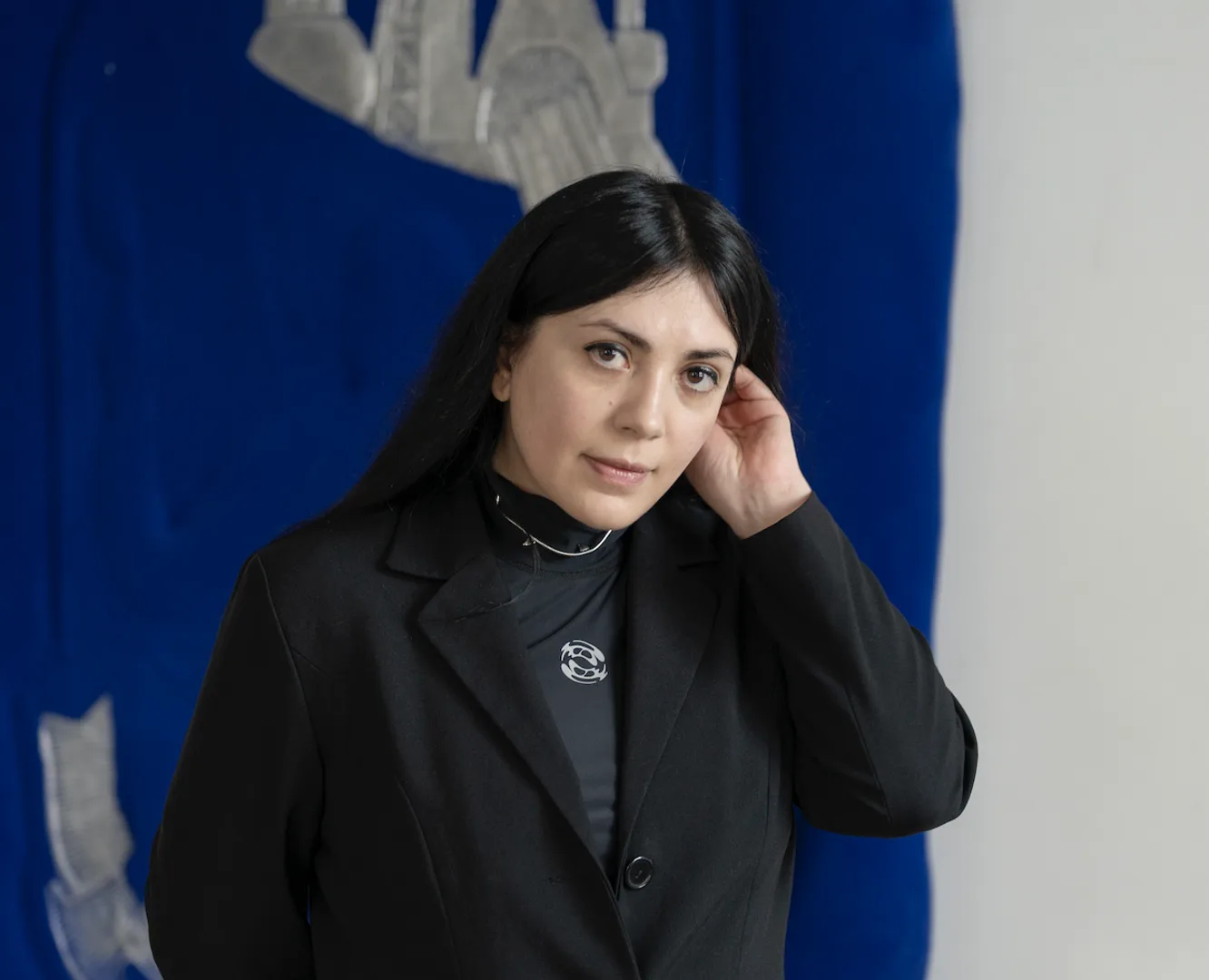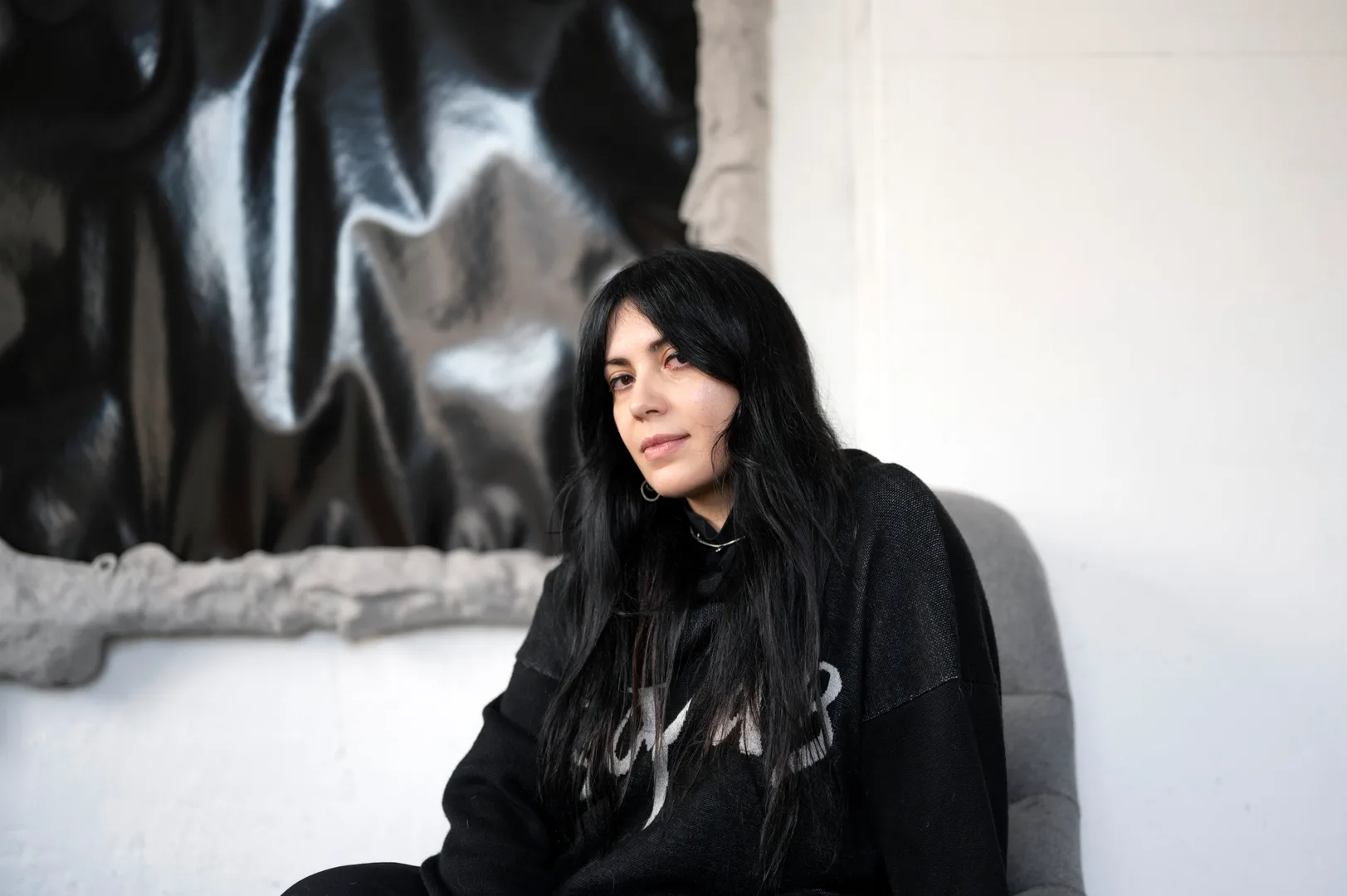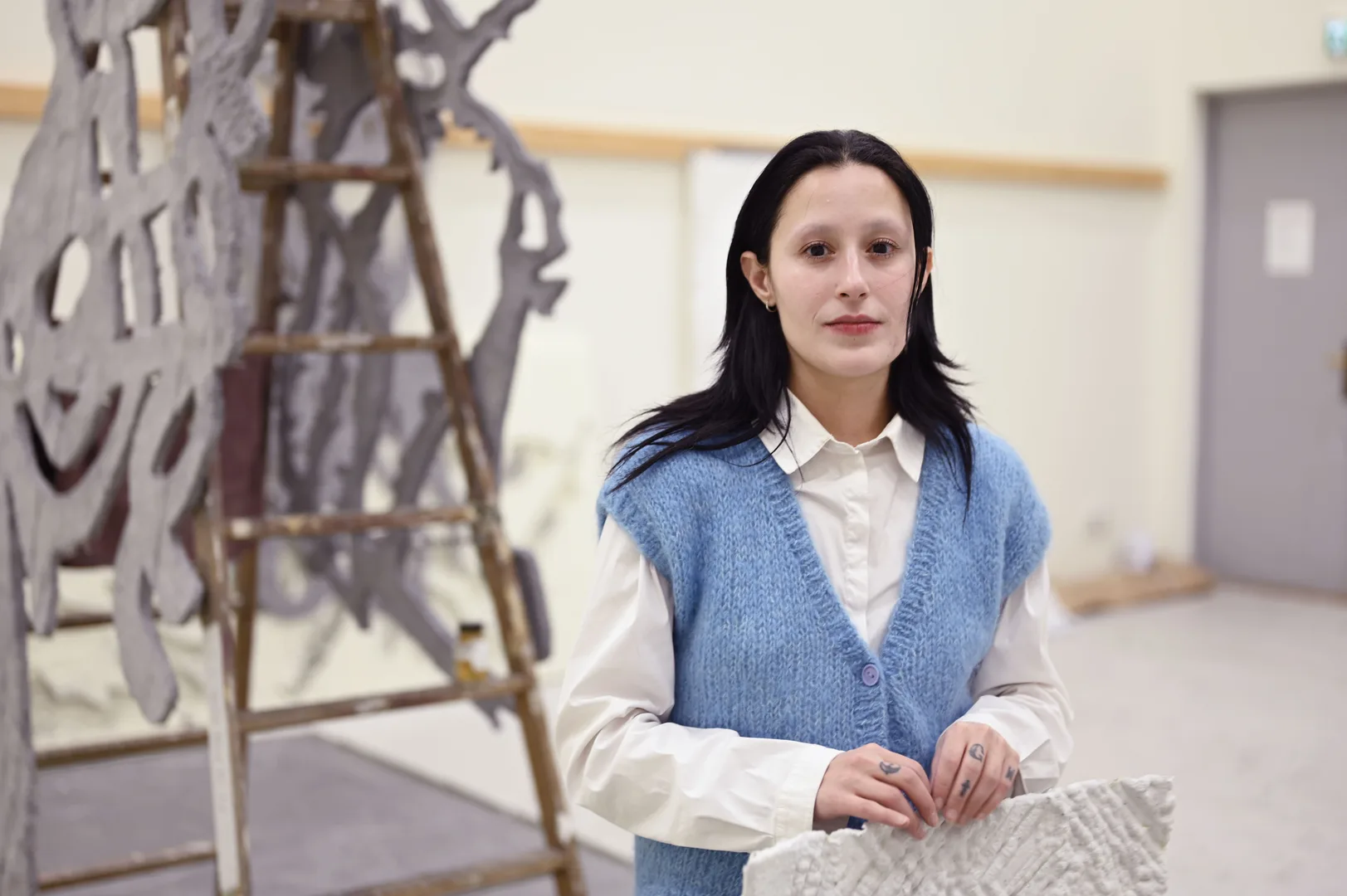Lesia Vasylchenko (Ukraine/Norway) works across a range of media, including video, photography, installation, and curatorial. In her research-based practice, Vasylchenko explores encounters between visual cultures, media technologies, and chronopolitics. She is the founder of STRUKTURA. Time, a cross-disciplinary initiative for research and practice within the framework of visual arts, media archaeology, literature, and philosophy. She holds a degree in Journalism from the Taras Shevchenko National University of Kyiv and in Fine Arts from the Oslo National Academy of the Arts.
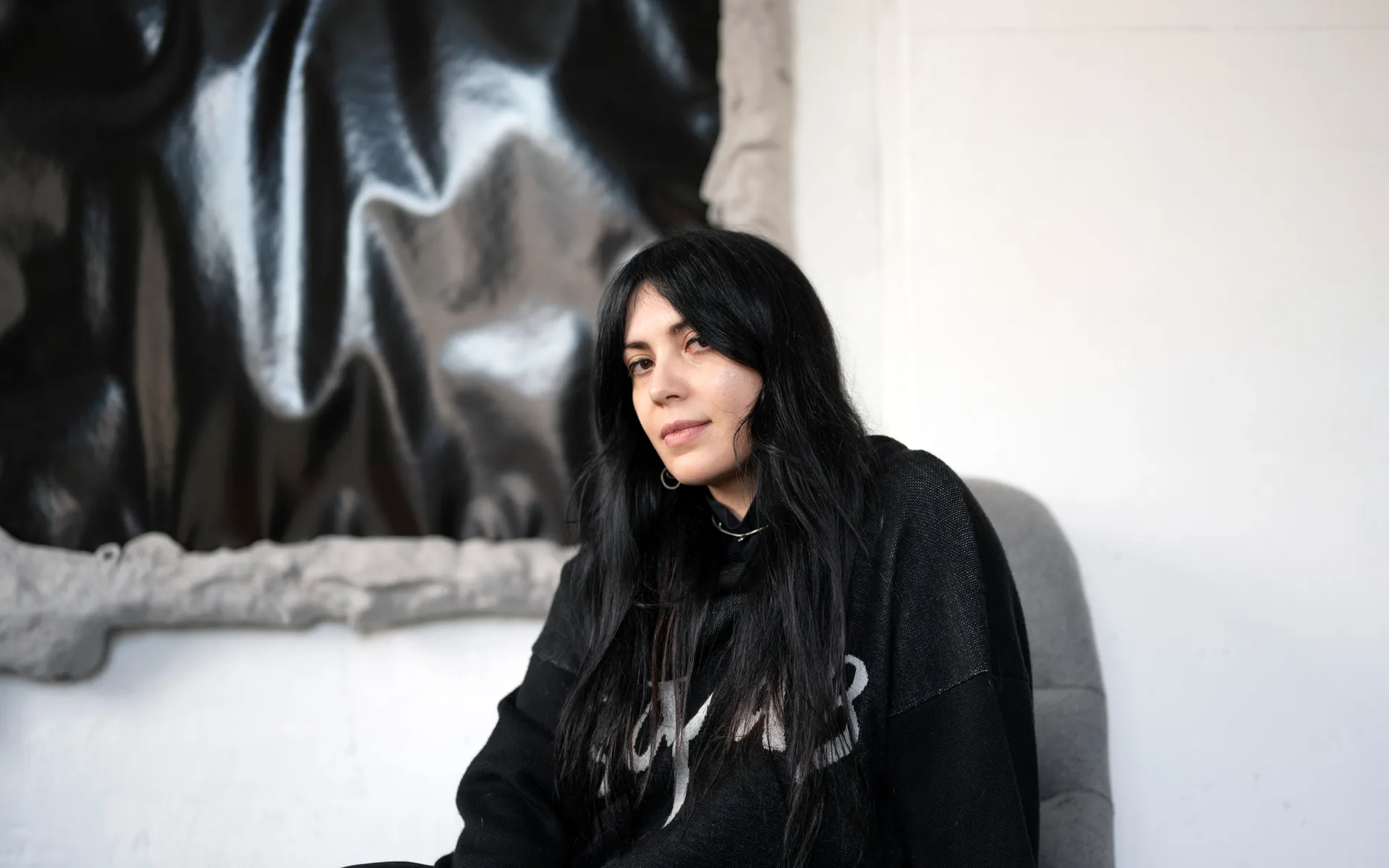
Sharing Experiences: Lesia Vasylchenko on her upcoming solo exhibition ‘Children of Infinity’ at Adiacenze in Bologna
We had the pleasure of visiting artist Lesia Vasylchenko in her studio at Fossekleiva Kultursenter in Berger. Her upcoming solo exhibition ‘Children of Infinity’ will be opening at Adiacenze in Bologna, Italy, on 7 February, 2025. Supported by OCA through our International Support scheme, the exhibition will run until 2 March, 2025. Vasylchenko, who works across video, photography, installation and curatorially, explores intersections between space infrastructures, media culture and politics of time.
Lesia, thank you for inviting us to your studio. Can you start by telling us about your upcoming exhibition, ‘Children of Infinity’, and what inspired it?
The exhibition centres around my newly produced video work, Children of Infinity. This work, created in collaboration with the Medicina Astronomical Radio Observatory and the National Institute for Astrophysics in Italy, is inspired by a chapter from the 1964 sci-fi novel Children of Infinity by Ukrainian cosmist writer Oles Berdnyk.
A staunch advocate for individual and collective freedom, Berdnyk’s writings criticized oppressive systems and championed the ideals of spiritual and intellectual liberation, intertwining these themes with cosmic aspirations.
Could you elaborate more on what cosmism is – and what it means for your work?
Cosmism is a philosophical and cultural movement that emerged in the late 19th and early 20th centuries. It blends elements of science and metaphysics, focusing on humanity’s cosmic destiny, immortality, and the technological transformation of life. Cosmism influenced later ideas in transhumanism, space exploration, and artificial intelligence.
Ukrainian Cosmism draws heavily on the nation’s historical struggles, grassroots traditions, and its unique blend of folk belief and modernism, particularly as it developed in response to decades of political and cultural oppression. It reflects a unique fusion of Ukrainian folklore and futurism with the technological enlightenment of the 1960s, an era marked by the space race and aspirations of expanding humanity’s presence outside of Earth.
While cosmism is often associated with Russian Cosmism, it is crucial to recognize the distinct identity and contributions of Ukrainian Cosmism, particularly in the current context of the ongoing war in Ukraine and centuries of Russian colonial attempts.
In today’s age of decolonising narratives and reimagining futures, it’s important to acknowledge the plurality of histories, investigate shadow histories, and be open for transformation of memory and knowledge about the world around us. The challenge for society is to discover ways to navigate possible presents—using the cultural imagination of diverse futures to perceive and engage with open-ended times.
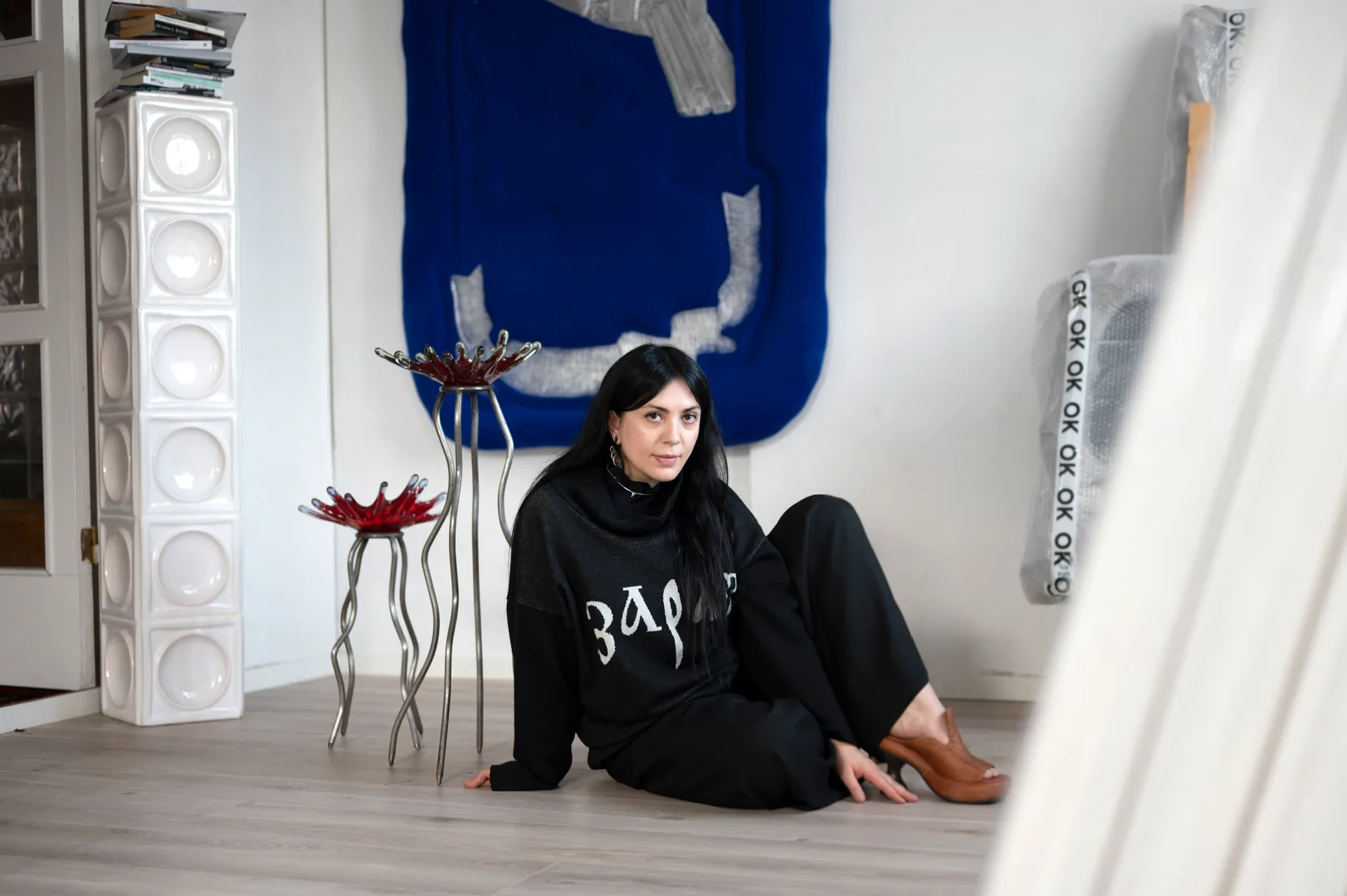
At Vasylchenko's studio at Fossekleiva Kultursenter in Berger.
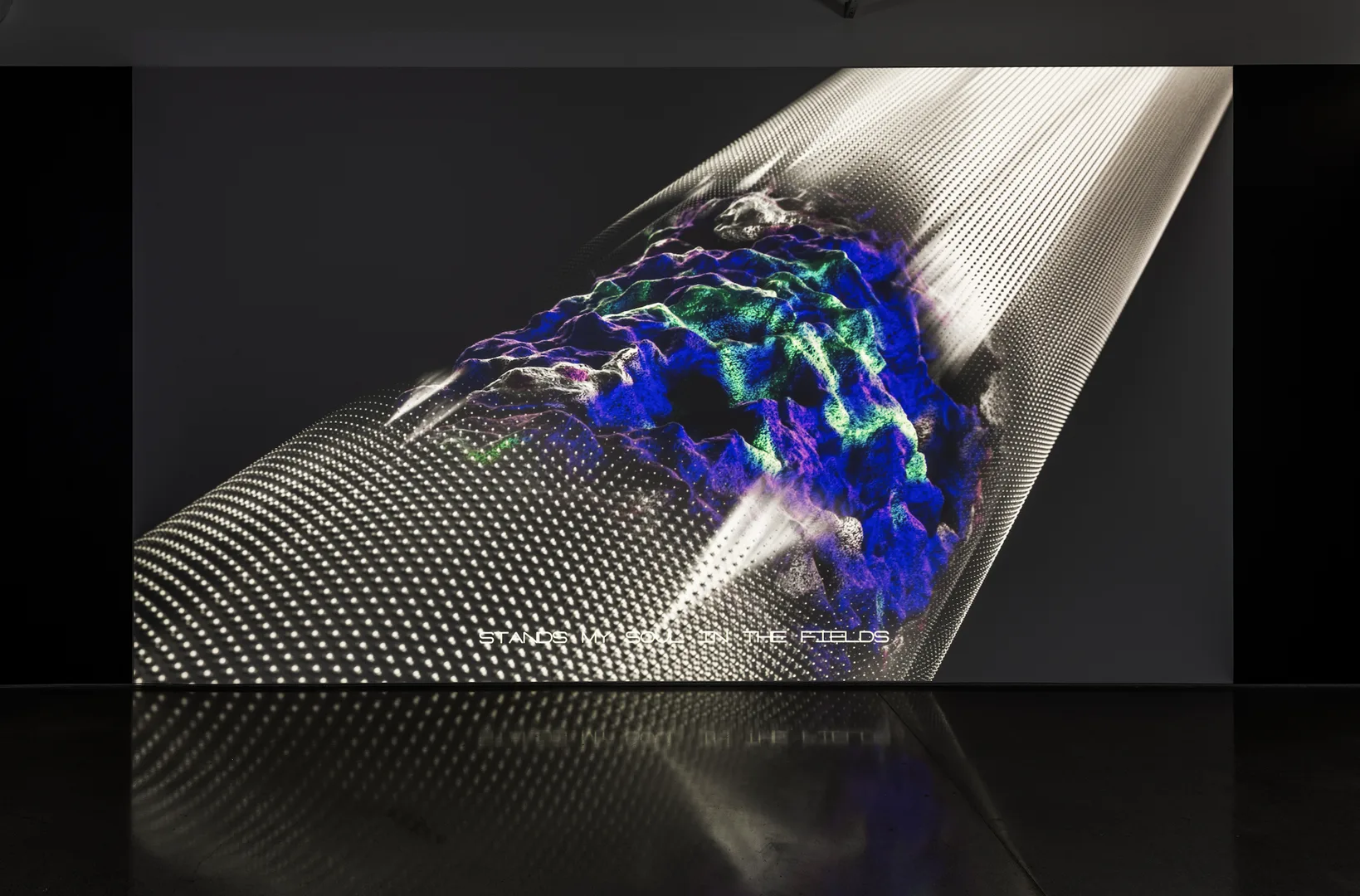
Lesia Vasylchenko, Cronosphere, Installation image, Kunsthall Oslo 2024
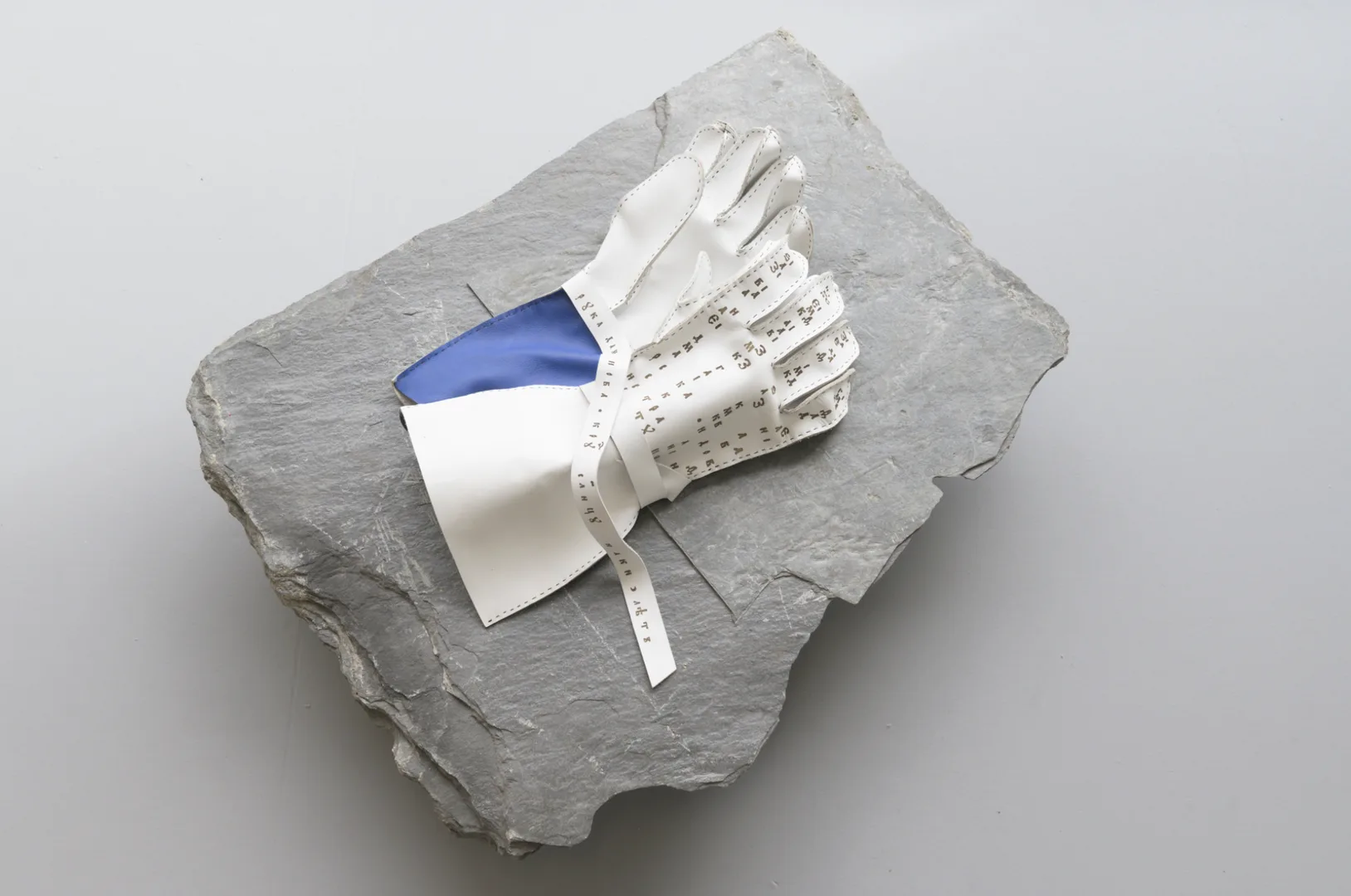
Lesia Vasylchenko, Year In a Hand (Въ Руцѣ Лѣто), 2021
This exhibition will also include other works like Year In a Hand, Postcard From a Nonexisting City and Chronosphere. Could you give us a bit more insight into those works?
Yes, this exhibition is a constellation of different works I produced over the past two years, which connects time “production” methods from different historical periods. What is common for those methods is a human gaze that is looking into the night sky, searching for knowledge and answers.
I’ll be showing Year In a Hand (or Въ Руцѣ Лѣто), which is simultaneously a wearable sculpture and ritual tool. It functions as both a calendar and a “pre-clock” timekeeping device based on a system used in 11th-14th century Kyivan Rus'. It’s built around an ancient method that links time to the movement of the planets. I’ve reimagined this tool as an artifact from the future, inviting to speculate on how we might experience time differently, using the framework of speculative design and science fiction.
Postcard From a Nonexisting City draws on a collection of propaganda stamps I inherited from my father. Our family was always very interested in space exploration and the dreams connected to it. Even my father’s name, Yuri, was shared with cosmonaut Yuri Gagarin. Today, with thousands of satellites orbiting Earth and shaping our global consciousness, I see the stamps as part of a broader story about how cosmic utopias have shifted from being artistic or political to being more about technology of Near Real-Time, speed of observation, data extraction and weaponization of space around Earth.
The video Chronosphere follows up on that, and further explores the multiplicity of scales of time that space infrastructures are generating today. It is a parafictional story about the weaponization of time. It spans everything from the synchronization of satellites to the long-term impacts of ecological trauma. In particular, the piece looks at how space technologies, such as observation satellites, mediate human and non-human experiences of time. I’m interested in how technologies like these create a hypersynchronized planet, where the micro and macro scales of existence are inextricably linked. It’s about understanding how we live in time and how that time is manipulated on a global scale.
You’ve mentioned how your exhibition ties into several topics you work with. Can you tell us more about your practice?
At the core of my work is a fascination with the intersections of media archeology, technology, and chronopolitics. Since my practice is research-based I often organize exhibitions, public discussions, screenings with other artists and practitioners who are working with the politics of time, visual culture, philosophy of technologies, etc. I am also working with speculative terminology, meaning that I have to name some ideas and present them as a concept to be able to continue working on an art project. For example, during my work on the video “Tahyoness” for the Munch Triennale I introduced the term “Tachyonic Data” published in the book ‘Chimeras: Inventory of Synthetic Cognition'. And more recently, I published an article where I gave life to the concept “Chronosphere” for the Institute of Network Cultures.
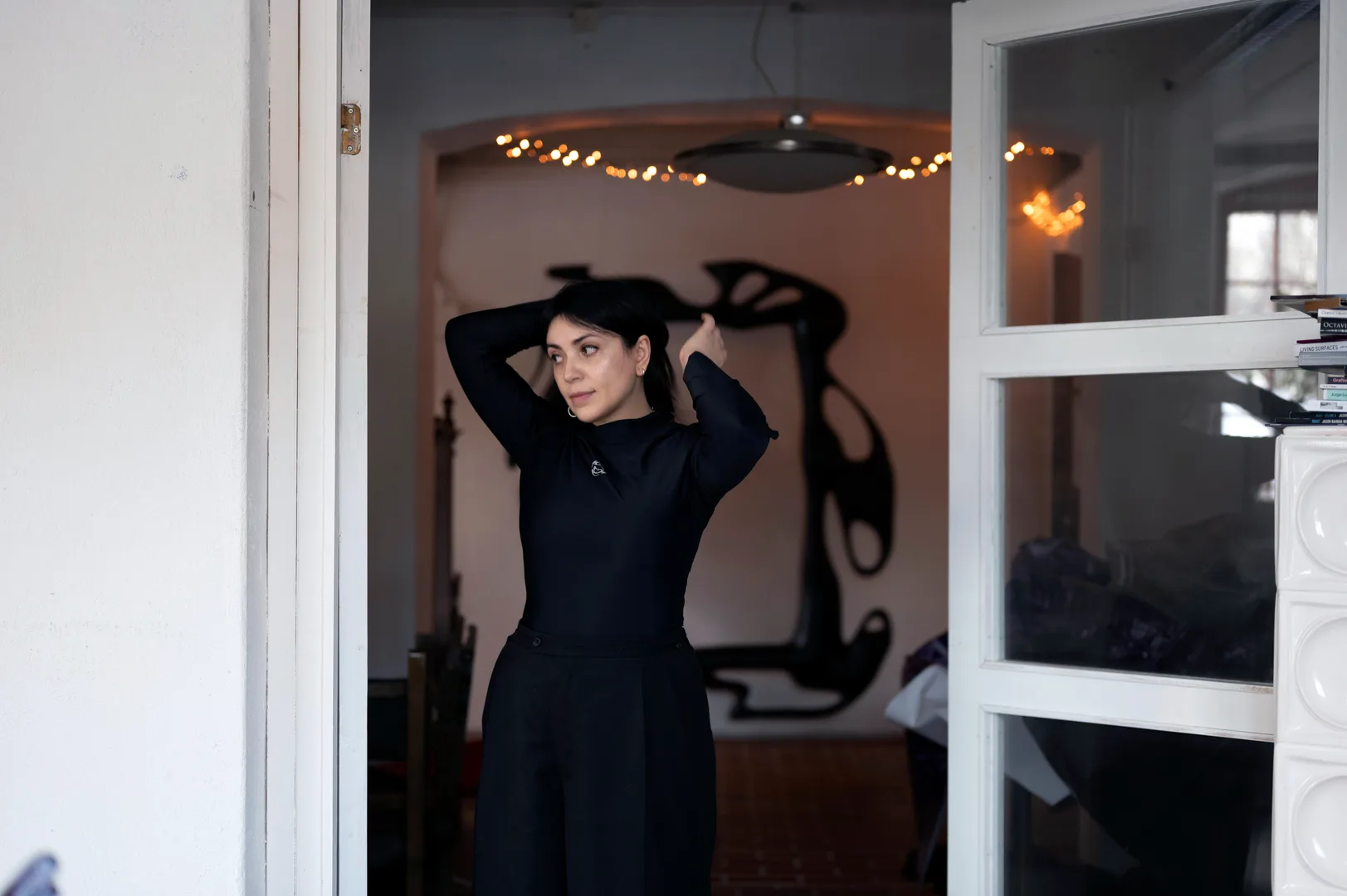
At Vasylchenko's studio at Fossekleiva Kultursenter in Berger.
Could you tell us what’s next after 'Children of Infinity'?
In 2025, I’ll be exhibiting internationally quite a lot. OCA’s International Support has been really helpful in this regard. For example, I’ve been nominated for the PinchukArtPrize and am currently working on a new video and installation for it. I’m also preparing for my solo exhibition at the Riga Photography Biennial, which opens in May. There’s a lot lined up, but I’m also excited to see how some of the topics explored in Children of Infinity will evolve in my future work.
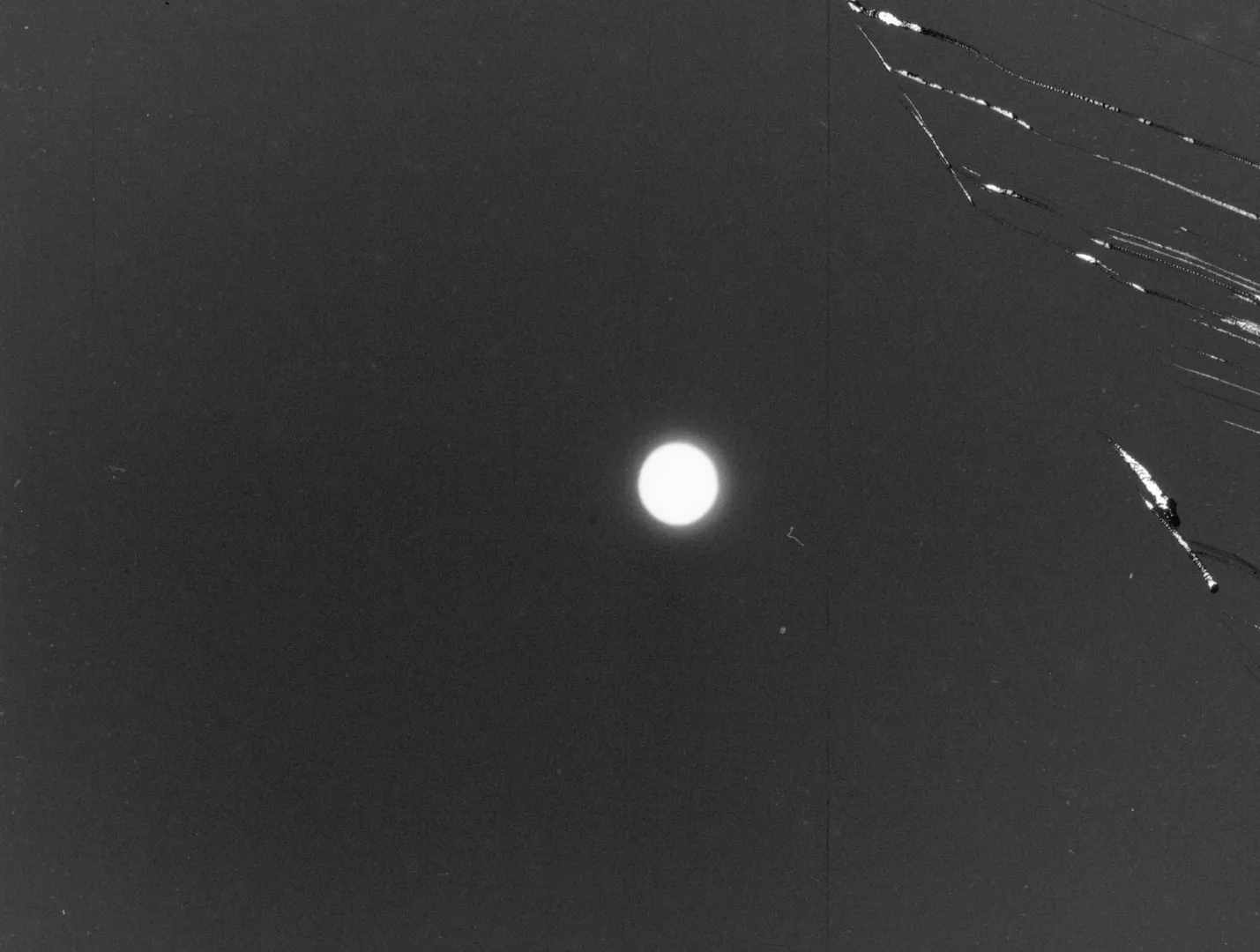
Image from Lesia Vasylchenko's upcoming video work “The Night” for the PinchukArtCentre Prize 2025
